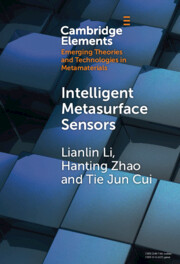577 results
The long-term spatio-temporal trends in burden and attributable risk factors of major depressive disorder at global, regional and national levels during 1990–2019: a systematic analysis for GBD 2019
-
- Journal:
- Epidemiology and Psychiatric Sciences / Volume 33 / 2024
- Published online by Cambridge University Press:
- 20 May 2024, e28
-
- Article
-
- You have access
- Open access
- HTML
- Export citation
Multiple model fault diagnosis and fault tolerant control for the launch vehicle’s attitude control system
-
- Journal:
- The Aeronautical Journal , First View
- Published online by Cambridge University Press:
- 09 May 2024, pp. 1-20
-
- Article
- Export citation
Application of computer vision and deep learning models to automatically classify medically important mosquitoes in North Borneo, Malaysia
-
- Journal:
- Bulletin of Entomological Research / Volume 114 / Issue 2 / April 2024
- Published online by Cambridge University Press:
- 01 April 2024, pp. 302-307
-
- Article
- Export citation
Effect of dietary selenium intake on CVD: a retrospective cohort study based on China Health and Nutrition Survey (CHNS) data
-
- Journal:
- Public Health Nutrition / Volume 27 / Issue 1 / 2024
- Published online by Cambridge University Press:
- 27 March 2024, e122
-
- Article
-
- You have access
- Open access
- HTML
- Export citation
Morphology, genetic characterization and phylogeny of Moniliformis tupaia n. sp. (Acanthocephala: Moniliformidae) from the northern tree shrew Tupaia belangeri chinensis Anderson (Mammalia: Scandentia)
-
- Journal:
- Parasitology / Volume 151 / Issue 4 / April 2024
- Published online by Cambridge University Press:
- 04 March 2024, pp. 440-448
-
- Article
-
- You have access
- Open access
- HTML
- Export citation
Non-linear relationship between the body roundness index and metabolic syndrome: data from National Health and Nutrition Examination Survey (NHANES) 1999–2018
-
- Journal:
- British Journal of Nutrition / Volume 131 / Issue 11 / 14 June 2024
- Published online by Cambridge University Press:
- 15 February 2024, pp. 1852-1859
- Print publication:
- 14 June 2024
-
- Article
- Export citation
Implementing a continuous quality-improvement framework for tuberculosis infection prevention and control in healthcare facilities in China, 2017–2019
-
- Journal:
- Infection Control & Hospital Epidemiology / Volume 45 / Issue 5 / May 2024
- Published online by Cambridge University Press:
- 25 January 2024, pp. 651-657
- Print publication:
- May 2024
-
- Article
-
- You have access
- Open access
- HTML
- Export citation
Airfoil response to periodic vertical and longitudinal gusts
-
- Journal:
- Journal of Fluid Mechanics / Volume 979 / 25 January 2024
- Published online by Cambridge University Press:
- 17 January 2024, A35
-
- Article
- Export citation
Inverse association between maternal serum concentrations of trace elements and risk of spontaneous preterm birth: a nested case–control study in China
-
- Journal:
- British Journal of Nutrition / Volume 131 / Issue 8 / 28 April 2024
- Published online by Cambridge University Press:
- 08 January 2024, pp. 1425-1435
- Print publication:
- 28 April 2024
-
- Article
- Export citation
Advanced Glycation End Products’ Receptor DNA Methylation Associated with Immune Infiltration and Prognosis of Lung Adenocarcinoma and Lung Squamous Cell Carcinoma
-
- Journal:
- Genetics Research / Volume 2023 / 2023
- Published online by Cambridge University Press:
- 01 January 2024, e4
-
- Article
-
- You have access
- Open access
- HTML
- Export citation
Dispersion and Swellability of Ternary Surfactant Co-Modified Montmorillonites
-
- Journal:
- Clays and Clay Minerals / Volume 69 / Issue 6 / December 2021
- Published online by Cambridge University Press:
- 01 January 2024, pp. 759-771
-
- Article
- Export citation
Artificial Selection Drives SNPs of Olfactory Receptor Genes into Different Working Traits in Labrador Retrievers
-
- Journal:
- Genetics Research / Volume 2022 / 2022
- Published online by Cambridge University Press:
- 01 January 2024, e77
-
- Article
-
- You have access
- Open access
- HTML
- Export citation
The Properties of Clay Minerals in Soil Particles from Two Ultisols, China
-
- Journal:
- Clays and Clay Minerals / Volume 65 / Issue 4 / August 2017
- Published online by Cambridge University Press:
- 01 January 2024, pp. 273-285
-
- Article
- Export citation
Genetic Analysis of Prunus salicina L. by Random Amplified Polymorphic DNA (RAPD) and Intersimple Sequence Repeat (ISSR)
-
- Journal:
- Genetics Research / Volume 2022 / 2022
- Published online by Cambridge University Press:
- 01 January 2024, e63
-
- Article
-
- You have access
- Open access
- HTML
- Export citation
Six MicroRNA Prognostic Models for Overall Survival of Lung Adenocarcinoma
-
- Journal:
- Genetics Research / Volume 2022 / 2022
- Published online by Cambridge University Press:
- 01 January 2024, e39
-
- Article
-
- You have access
- Open access
- HTML
- Export citation
Fabrication of Anthocyanin/Montmorillonite Hybrid Pigments to Enhance Their Environmental Stability and Application in Allochroic Composite Films
-
- Journal:
- Clays and Clay Minerals / Volume 69 / Issue 1 / February 2021
- Published online by Cambridge University Press:
- 01 January 2024, pp. 142-151
-
- Article
- Export citation

Intelligent Metasurface Sensors
-
- Published online:
- 20 December 2023
- Print publication:
- 01 February 2024
-
- Element
- Export citation
The egg ribonuclease SjCP1412 accelerates liver fibrosis caused by Schistosoma japonicum infection involving damage-associated molecular patterns (DAMPs)
-
- Journal:
- Parasitology / Volume 151 / Issue 3 / March 2024
- Published online by Cambridge University Press:
- 18 December 2023, pp. 260-270
-
- Article
-
- You have access
- Open access
- HTML
- Export citation



